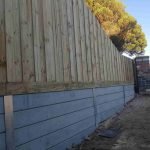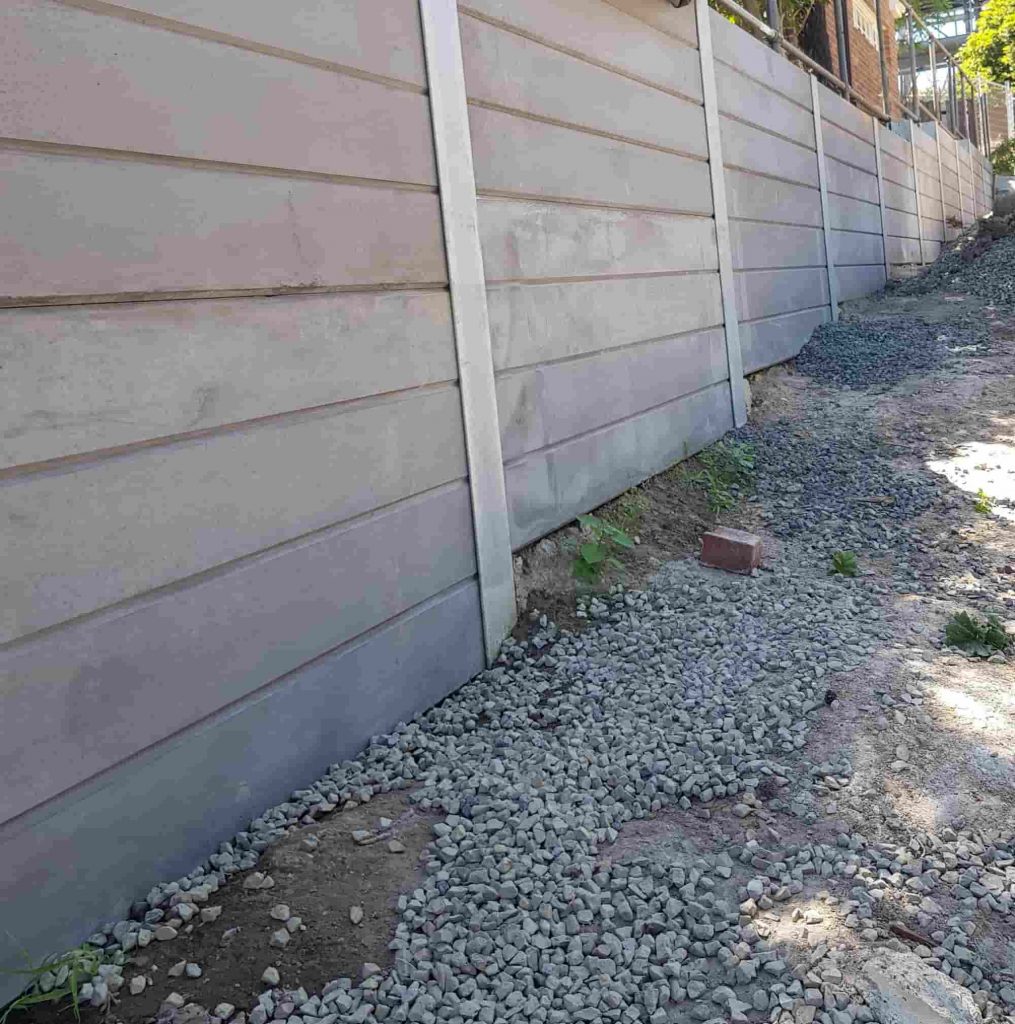Introduction
Building a retaining wall is more than just stacking stones or putting wood; it's an art that mixes engineering concepts, design aesthetic appeals, and useful functionality. As we delve into From Idea to Completion: A Day in the Life of a Retaining Wall Builder, you'll discover the complexities involved in this interesting occupation. Whether it's handling concrete sleepers, H beams, or timber sleepers, every aspect plays a critical role in guaranteeing that the structure not only looks great but likewise stands the test of time.
What is a Maintaining Wall?
A maintaining wall is a structure developed to hold back soil and avoid erosion on sloped surface areas. These walls are vital for preserving landscape integrity and can be made from different materials such as stone, wood, and concrete.
The Function of a Retaining Wall Installer
A retaining wall installer is responsible for changing strategies into tangible structures. They work carefully with architects and landscape designers to make sure that the finished item meets both functional and aesthetic criteria.
Understanding the Different Types of Retaining Walls
Concrete Sleepers
Concrete sleepers are pre-cast blocks utilized for their effectiveness and durability. They provide exceptional assistance for heavy loads and are resistant to rot and bug damage.
H Beams
H beams use considerable structural assistance due to their shape, making them ideal for taller retaining walls where additional strength is required.
Wood Sleepers
Though visually appealing, wood sleepers require regular maintenance due to their susceptibility to decay. However, they can offer a warm aesthetic that blends well with natural landscapes.
Timber Sleepers
Timber sleepers are frequently used in domestic tasks where less height is required. They can produce a rustic charm but featured concerns about longevity.
Stone Retaining Walls
Stone walls are timeless and can add tremendous worth to homes. Their natural appearance makes them popular in landscaping styles however requires knowledgeable workmanship for appropriate installation.
The Preliminary Consultation: What Occurs First?
During the initial assessment stage, a retaining wall contractor meets clients to discuss their requirements and preferences. This stage includes website evaluations, understanding drain problems, and identifying material choices.
Planning & Design Stage: Crafting the Blueprint
Once initial discussions conclude, comprehensive plans are developed. This plan includes measurements, material specs (be it concrete sleeper or stone), and drainage solutions.
Permits & Laws: Navigating Legalities
Before building starts, protecting essential authorizations is vital. Building codes differ by location; hence understanding regional regulations guarantees compliance throughout the project.
Preparing the Site: Clearing & Excavation Work
Preparing the website includes clearing plants and particles followed by excavation work. This action lays the foundation for a structurally sound retaining wall.
Material Selection: Choosing The Right Components
Selecting products aligns carefully with style goals while also thinking about budget plan restraints. Aspects like sturdiness (concrete http://hectorfzfz149.image-perth.org/structure-strong-structures-the-significance-of-picking-the-right-contractor-for-your-retaining-walls vs. timber sleeper) play an essential role in this decision-making process.
Foundation Work: The Significance of Stability
A strong foundation is non-negotiable when building any keeping wall. Whether using H beams or stone, ensuring stability avoids future collapses or shifts.
Construction Process: Detailed Execution
Lay Out The Plan

Excavate For The Base
Digging guarantees that water will drain pipes appropriately away from the wall.
Install Drainage Solutions
Correct drainage systems prevent soil saturation behind walls.

Constructing The Wall
Depending on selected materials (like concrete sleepers), walls may be developed layer by layer.
Backfilling
When set up, backfilling helps stabilize the structure while guaranteeing adequate drainage.
Finish Work
Including any preferred functions like caps or ornamental components finishes the look.
Tools of The Trade: Necessary Equipment For Builders
Having a selection of tools at hand makes all jobs much easier:
- Shovels & & Picks Levels Compactors Trowels Power Tools
Quality Control Steps Throughout Construction
Quality control guarantees that every element fulfills industry requirements:
- Regular Inspections Material Testing Adherence To Plans
Addressing Difficulties On-Site: Problem-Solving Abilities Required
No building task goes off without a hitch! From unforeseen weather modifications to material lacks-- being adaptable is key!
Final Touches: Visual Enhancements For Your Retaining Wall
After building comes beautification:

Maintenance Tips For Durability Of Maintaining Walls
To extend the life of your keeping wall:
- Regularly inspect for cracks Clean particles Check drain systems
Common FAQs About Keeping Walls
1. What materials are best for developing keeping walls?
Choosing in between concrete sleeper, stone, timber sleeper depends upon visual preference and structural requirements.
2. How tall can my retaining wall be?
Local guidelines determine height limitations; usually in between 4-- 6 feet without special permits.
3. Do I need preparing permission?
In most cases yes; inspect regional building codes before beginning construction.
4. Can I install a retaining wall myself?
While do it yourself is possible, employing professionals guarantees safety and compliance with regulations.
5. How do I preserve my keeping wall?
Regular assessments must focus on looking for cracks or drain issues; instant repairs boost longevity!
6. Are retaining walls expensive?
Costs vary based upon materials picked(e.g., wood vs stone)along with labor expenses involved.
Conclusion
In conclusion, building a keeping wall includes careful planning from start to complete-- for this reason why understanding every step in this journey from principle through completion matters immensely! From choosing materials like concrete sleepers or wood to browsing legal requirements-- it's clear how comprehensive this process really is! So next time you see one standing tall versus nature's forces-- take a minute to value all that went into creating it!